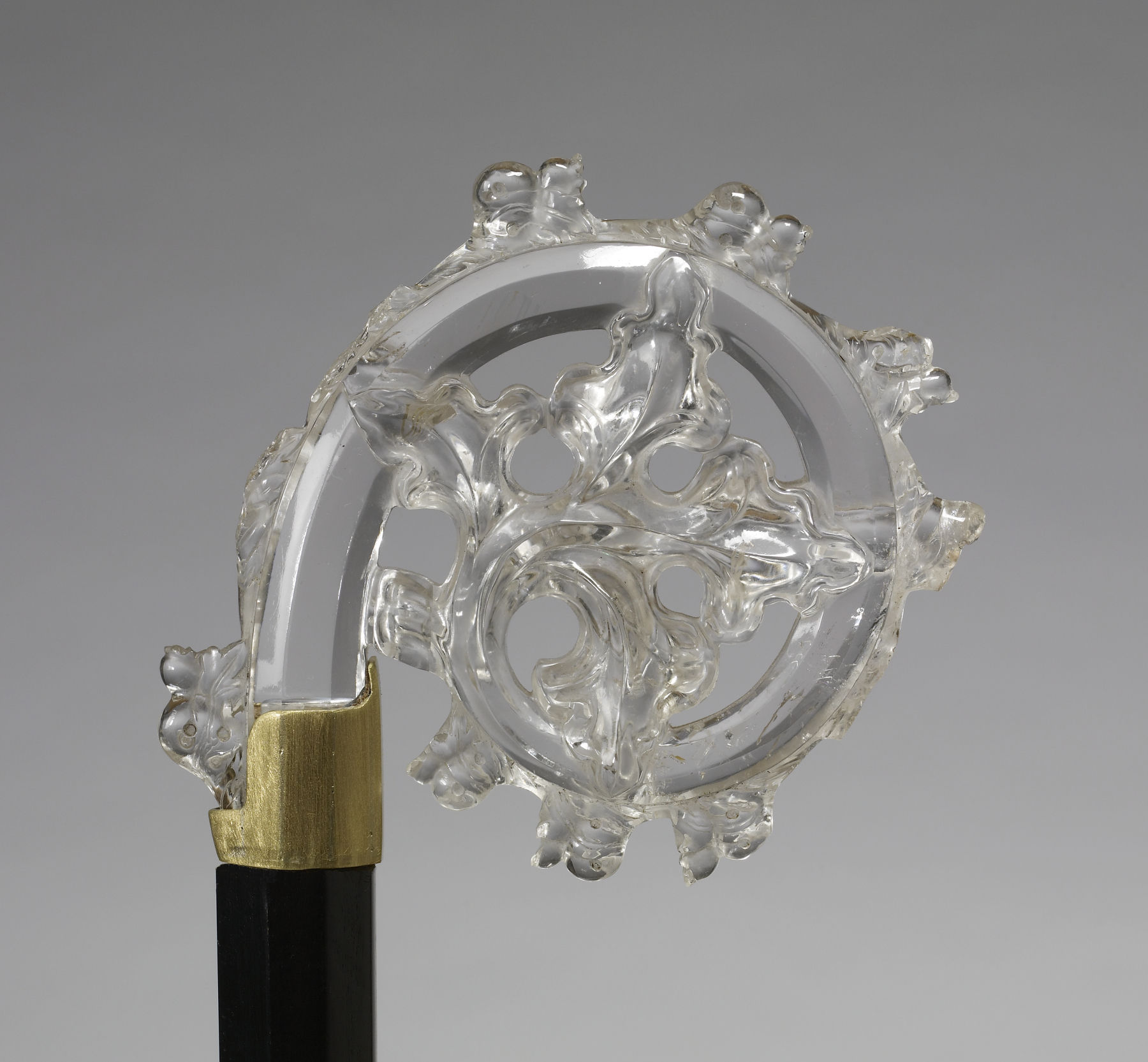Head of a Crozier
(Medieval Europe )
This rare and beautiful crozier represents the only known example made entirely of rock crystal, a hard stone that is very difficult to work. The skill of the carver can be seen in the smoothly arching leaves and the series of small hooks, called crockets, lining the outer edge. An abbess may have used a crystal crozier as a sign of her purity, a symbolic interpretation that dates back to the 9th century.
Provenance
Provenance (from the French provenir, 'to come from/forth') is the chronology of the ownership, custody, or location of a historical object. Learn more about provenance at the Walters.
Dikran Kelekian, Paris and New York; Henry Walters, Baltimore, 1913 (?) or 1923 (?), by purchase; Walters Art Museum, 1931, by bequest.
Exhibitions
| 1999-2000 | Vive la France! French Treasures from the Middle Ages to Monet. The Walters Art Gallery, Baltimore. |
| 1966-1967 | Treasures from Medieval France. The Cleveland Museum of Art, Cleveland. |
| 1967 | An Exhibition of the Treasures of The Walters Art Gallery. The Walters Art Museum, Baltimore; Smith College Museum of Art, Northampton; Pace Wildenstein Gallery, New York. |
Geographies
France, Paris (Place of Origin)
Measurements
4 11/16 x 5 7/16 x 1 7/16 in. (12 x 13.8 x 3.6 cm)
Credit Line
Acquired by Henry Walters
Location in Museum
Accession Number
In libraries, galleries, museums, and archives, an accession number is a unique identifier assigned to each object in the collection.
In libraries, galleries, museums, and archives, an accession number is a unique identifier assigned to each object in the collection.
41.62


